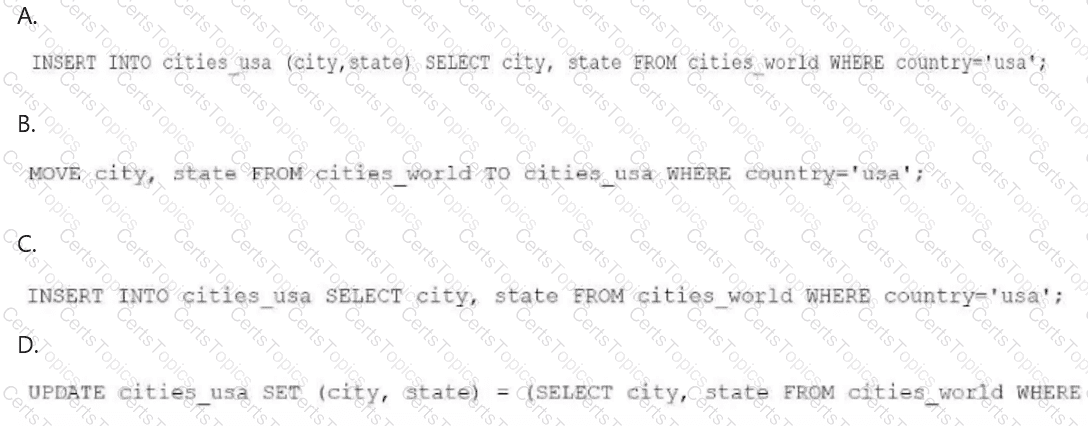A company stores CSV files in an Amazon S3 bucket. A data engineer needs to process the data in the CSV files and store the processed data in a new S3 bucket.
The process needs to rename a column, remove specific columns, ignore the second row of each file, create a new column based on the values of the first row of the data, and filter the results by a numeric value of a column.
Which solution will meet these requirements with the LEAST development effort?
A data engineer needs to create an Amazon Athena table based on a subset of data from an existing Athena table named cities_world. The cities_world table contains cities that are located around the world. The data engineer must create a new table named cities_us to contain only the cities from cities_world that are located in the US.
Which SQL statement should the data engineer use to meet this requirement?

A company uses Amazon S3 as a data lake. The company sets up a data warehouse by using a multi-node Amazon Redshift cluster. The company organizes the data files in the data lake based on the data source of each data file.
The company loads all the data files into one table in the Redshift cluster by using a separate COPY command for each data file location. This approach takes a long time to load all the data files into the table. The company must increase the speed of the data ingestion. The company does not want to increase the cost of the process.
Which solution will meet these requirements?
A company plans to use Amazon Kinesis Data Firehose to store data in Amazon S3. The source data consists of 2 MB csv files. The company must convert the .csv files to JSON format. The company must store the files in Apache Parquet format.
Which solution will meet these requirements with the LEAST development effort?